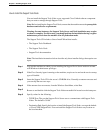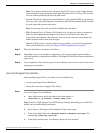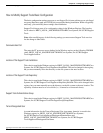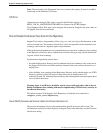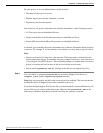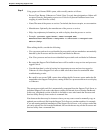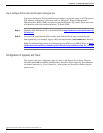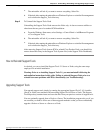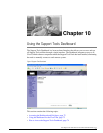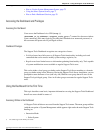
Step 2
Using proper well-formed XML syntax, add or modify entries as follows:
•
Process Type: Known, Unknown or Critical. Note: Use only these designations. Others will
not parse correctly. Designating a process as Critical will prevent Dashboard users from
stopping it (on the Services screen).
•
Name: The name of the process or service. Can include, but does not require, an .exe extension.
•
Manufacturer: Optionally, the manufacturer of the process or service.
•
Help: Any explanatory information you wish to display about the process or service.
•
Example: <process type="known" name="notepad.exe"
manufacturer="Microsoft"><help>This is Microsoft's Notepad text
editor</help>
When editing the file, consider the following:
•
Cisco processes and services not identified in processinfo.xml are nonetheless automatically
detected by the Processes and Services utility and labeled as Known.
•
Non-Cisco processes and services not identified in processinfo.xml are labeled as Unknown.
•
Be aware that Support Tools Dashboard users will be unable to stop services and processes
tagged Critical.
•
Consider that there is value in leaving less important processes and services tagged as
Unknown. It allows Support Tools users to bulk select these items for termination when
troubleshooting a node.
•
Be careful to use correct XML syntax when editing the file. Incorrect syntax makes the file
unreadable to the Support Tools parser, causing all but Cisco processes and services to display
as Unknown.
The current processinfo.xml file is automatically propagated from the Support Tools Server to
individual Support Tools nodes when these systems are selected for use from the Dashboard.
In this way, an updated version of the file is available to users who launch the Processes and
Services utility directly from a node via command line.
Note however that there may be instances where you may want or need to manually copy an
updated processinfo.xml file from the Support Tools Server to another machine: for example,
if you are running multiple installations of the Support Tools Server, or if you have nodes that
are rarely selected for use from the Dashboard, but on which users may run the Processes and
Services utility from a command line.
Cisco Support Tools User Guide for Cisco Unified Software Release 2.1(1)
65
Chapter 8: Configuring Support Tools
How to Disable Continuous Virus Scan for the Repository



